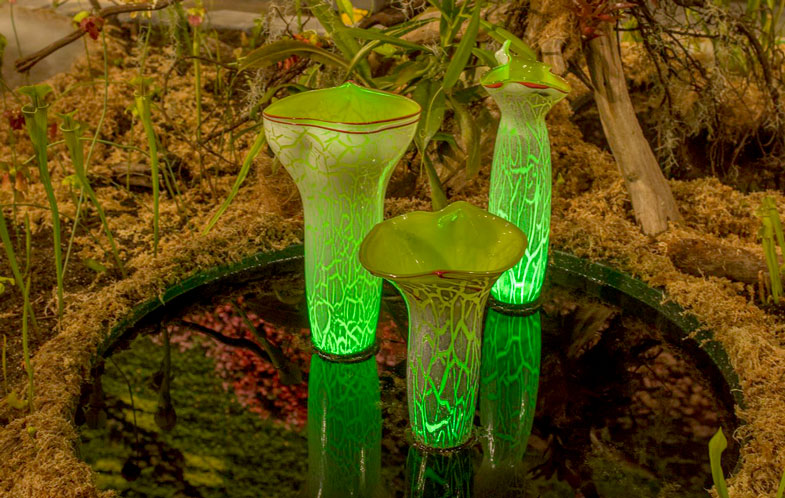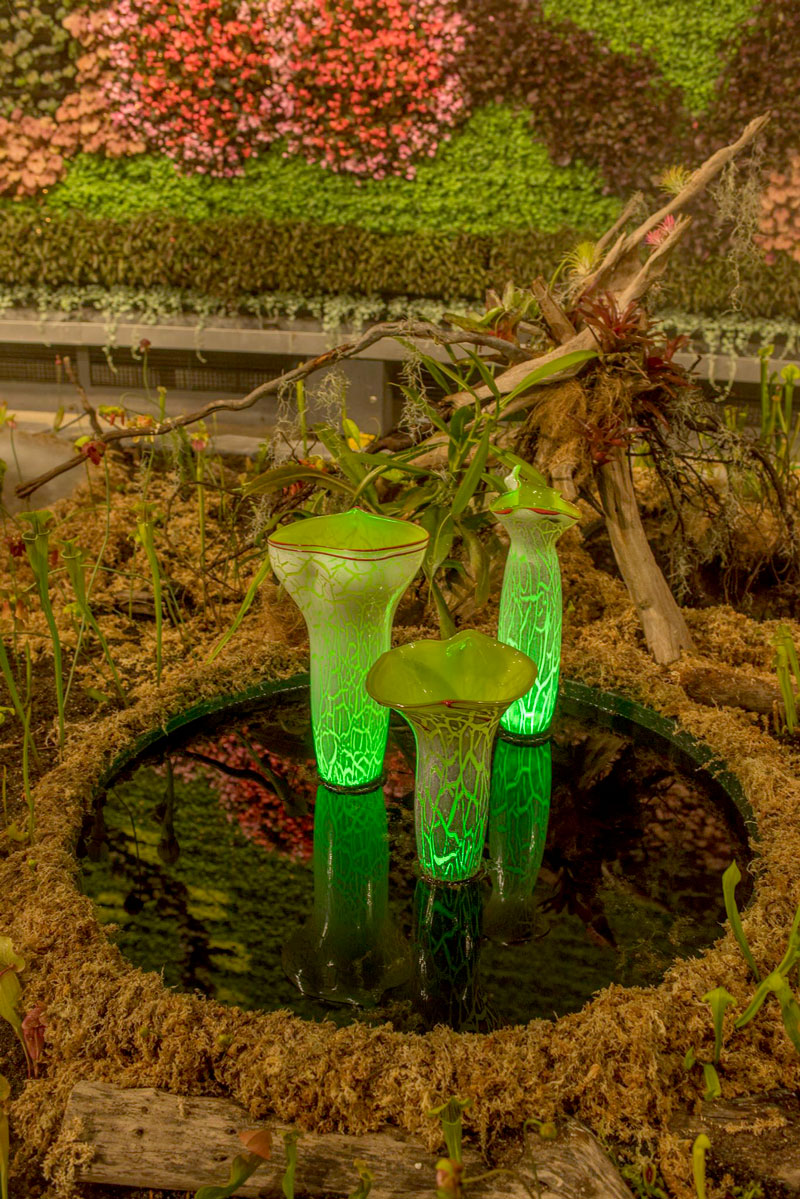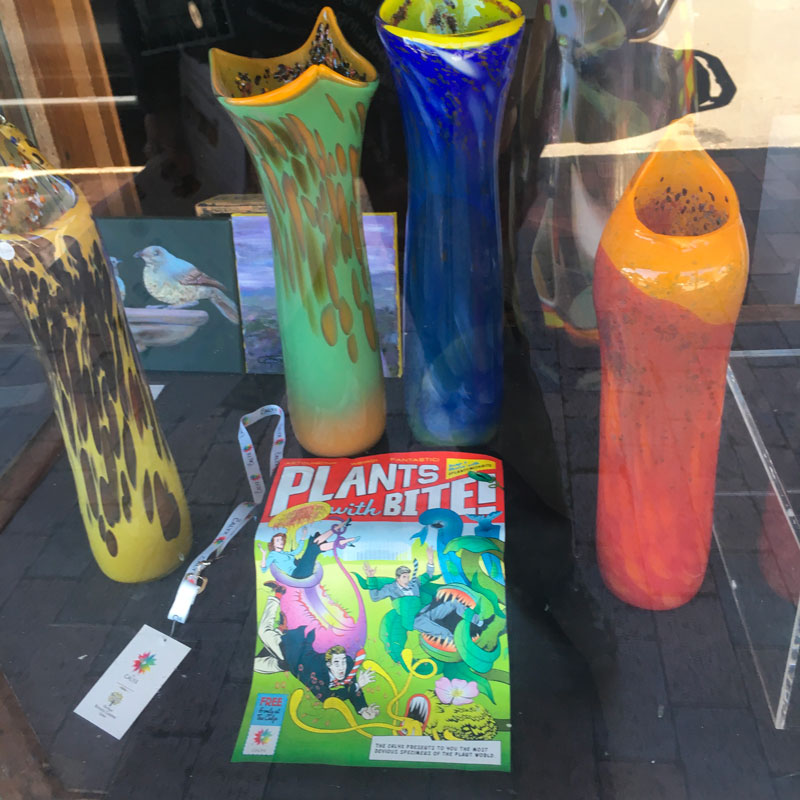Plants with Bite


Tall, crowding stalks and sharp, protruding teeth. A flash of a sour green and then … snap! When thinking of carnivorous plants, fantasy-like images of large, sinister, Journey to the Centre of the Earth by Jules Verne-esque plants spring to mind. However, in reality, they are no larger than 30cm. And now, over 10,000 of these plants can be seen at the Royal Botanic Gardens Sydney in their new exhibit, Plants with Bite. The installation, that opened in October, is showcasing over 120 varieties of carnivorous plants in the magnificent Calyx building in the centre of Sydney, curated by Director of Horticulture at the Royal Botanic Gardens, Jimmy Turner.
Turner, who previously worked with world-renowned glass artist Dale Chihuly at the Dallas Arboretum, had envisioned the exhibit to be like a “fantasy-world”, with “something for all ages”, including a three-metre tall robotic carnivorous plant that looms over you as you wander the grounds. This immersive, myth-like exhibition hopes to “blend the lines between art, experience, and science”, a reverie that will be available to experience until late next year. The interest for Turner in carnivorous plants originated from a childhood fascination, not only in their bizarre nature, but also in how they seemed instantly synonymous with the sinister. This boyish awe has translated into his direction of Plants with Bite, facilitated by the use of glassworks throughout the exhibit.
Collaborating with Turner for Plants with Bite are Blackheath glass-artists Keith Rowe and Kayo Yokoyama, who have created over 20 to-scale carnivorous plants from glass. These glass-replicas can be seen scattered throughout the installation, adding another layer of depth to the magical minefield that the Royal Botanic Gardens have created. Keith Rowe, who has been a glass-artist in Blackheath for 30 years, describes his process for creating these intricate glassworks as “comforting”, as he “manipulates the material” to create delicate, life-like sculptures. Rowe, who has previously drawn inspiration from nature to create his tulip series, says the experience with Plants with Bite has been “exciting”, and is intrigued to see what the response will be as his work enters such a public space.

Also working on Plants with Bite is Greg Bourke, the Curator Manager at the Blue Mountains Botanic Gardens in Mt. Tomah, who has been “fascinated with carnivorous plants since [he] was a kid”. This intrigue for Bourke is rooted in their unique evolution, “turning tides on the natural” by surviving in the harshest of environments through their predatory diet. Working almost like an “evil genius and henchman” with Turner, Bourke’s work is more concerned with the research and conservation of carnivorous plants, with 200 species native to the Blue Mountains. The Blue Mountains acts as a “biodiversity hotspot”, and many carnivorous plants can be seen in Blackheath around the bushwalks along the escarpment trail. Although carnivorous plants are well-protected in the greater Sydney area, they are highly threatened in Western Australia due to mining, and are susceptible to poaching in South-East Asia, causing the research into their habitat protection to be of high priority to conservers like Bourke.
Throughout their time in modern fascination, carnivorous plants have been presented as dark and monstrous, but in reality, are as fragile as the glass Rowe and Yokoyama have used to romanticise them. Exhibitions like Plants with Bite are hoping to steer attention towards strengthening Australian-led efforts to conserve and protect these logic-defying plants, and as these plants grow into maturity over the next year, more events will take place at the Calyx to spur education on the subject, such as Greg Bourke’s talk and tour of the exhibit in February of 2019. To donate towards research and conservation of carnivorous plants, visit the Royal Botanic Gardens website.
Eleni Vergotis